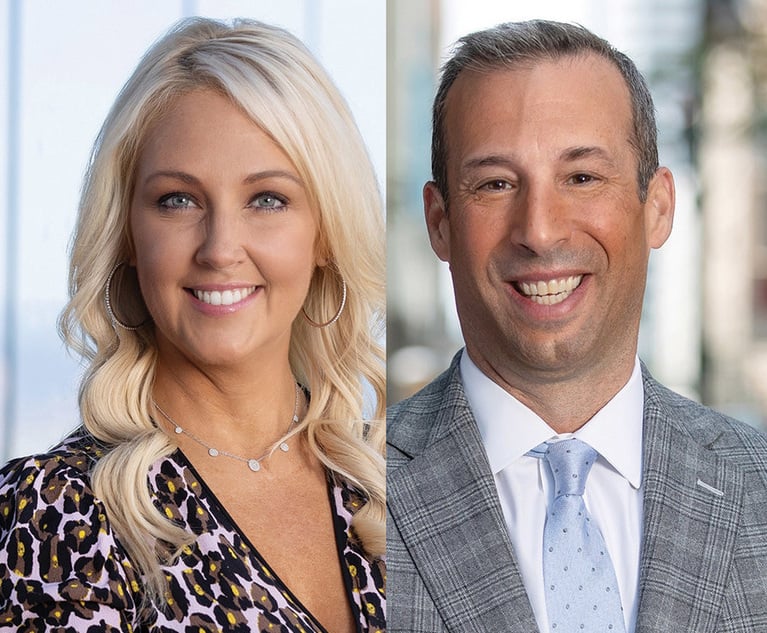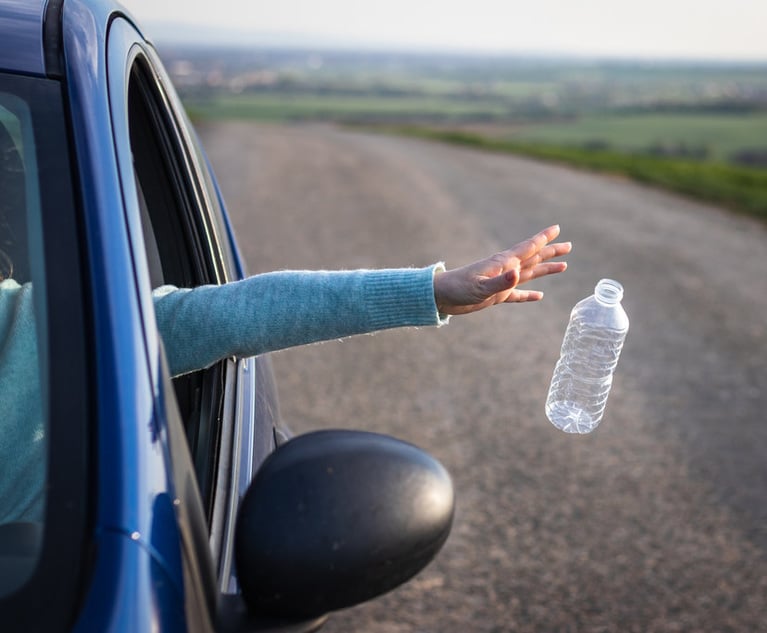 Detailed map of Miami-Dade County in Florida. Credit: Malachy666/Shutterstock.com
Detailed map of Miami-Dade County in Florida. Credit: Malachy666/Shutterstock.com State Regulators Dial Up New Area Codes for South Florida
Public Service Commission is moving forward with another area code in Palm Beach County, as they prepare to consider adding an area code in Miami-Dade County and the Florida Keys as Florida's growing population and cellphones and other technology requiring new numbers.
December 08, 2021 at 02:06 PM
3 minute read
State regulators approved moving forward with another area code in Palm Beach County, as they prepare to consider adding an area code in Miami-Dade County and the Florida Keys.
The moves by the state Public Service Commission reflect Florida's growing population and cellphones and other technology requiring new numbers.
Commissioners approved a plan to create an additional area code in Palm Beach County because the 561 area code is in jeopardy of running out of numbers.
The commission also announced that it will hold a workshop Dec. 21 about a proposal, filed last week by the North American Numbering Plan Administrator, to create an additional area code in Miami-Dade and the Keys. The North American Numbering Plan Administrator is an agency that oversees area codes.
"Florida is growing, we have a growing, modern economy, and that means more telephone numbers," commission Chairman Gary Clark said before the regulatory panel voted unanimously to approve the Palm Beach County plan.
In both cases, the North American Numbering Plan Administrator requested what is known in the telecommunications industry as an overlay, which means, for example, the new Palm Beach County area code will cover the same territory as the 561 area code, with new customers receiving the new code.
"All existing customers would retain their current area code in the overlay area and would not have to change their telephone numbers," the Palm Beach County request said. "The implementation of an overlay requires mandatory 10-digit dialing for local calls, including calls within the same [area code]."
The 561 area code began in 1996, and an additional area code, 772, was approved in 2002 because the 561 code was "nearing exhaust," according to the North American Numbering Plan Administrator. The new Palm Beach County code is projected to meet needs for 23 years.
The request did not specify a number for the new area code but calls for beginning to use it by early 2023.
The newly filed proposal for Miami-Dade County and the Keys would create an overlay for the 305 and 786 area codes. The 305 area code was created in 1947 and originally covered all of Florida, according to the proposal.
The 786 area code was added in Miami-Dade County in 1998 and expanded to the Keys in 2014. The proposal said another area code is needed in the area because numbers are projected to be exhausted by the first quarter of 2024.
The additional area code in Miami-Dade and the Keys would be expected to last 19 years. Its creation is backed by the telecommunications industry.
The industry has undergone massive changes during the past two decades as residents have unplugged traditional phone lines and moved heavily to cellphones and technology such as internet-based calling.
The Federal Communications Commission estimated that, as of June 2019, Florida had nearly 22.1 million wireless subscriptions, up from 21.4 million a year earlier, according to a state report on the telecommunications industry.
In recent years, the Public Service Commission approved a 689 area code in Central Florida, a 448 area code in Northwest Florida and a 656 area code in the Tampa Bay region. Similar to the South Florida plans, they were approved as overlays of existing area codes.
Jim Saunders reports for the News Service of Florida.
NOT FOR REPRINT
© 2025 ALM Global, LLC, All Rights Reserved. Request academic re-use from www.copyright.com. All other uses, submit a request to [email protected]. For more information visit Asset & Logo Licensing.
You Might Like
View All


Miami Firm Reaches $1.9M Settlement for Protester's Injuries, Pursues Class Action for Others
Trending Stories
- 1California Lawmakers Reach $50M Deal to Fund Legal Fights Against Trump
- 2Supreme Court Wrestles With Disabled Ex-Firefighter's Discrimination Case
- 3NJ Firm Narrowly Avoids Case Dismissal Over Lengthy Complaint Filed in Fed Court
- 4Arbitrators Under Fire for Allegedly Forcing Workers to 'Stay or Pay' Employers
- 5Plaintiff Narrowly Avoids Dismissal Over Lengthy Complaint Filed in Federal Court
Who Got The Work
Michael G. Bongiorno, Andrew Scott Dulberg and Elizabeth E. Driscoll from Wilmer Cutler Pickering Hale and Dorr have stepped in to represent Symbotic Inc., an A.I.-enabled technology platform that focuses on increasing supply chain efficiency, and other defendants in a pending shareholder derivative lawsuit. The case, filed Oct. 2 in Massachusetts District Court by the Brown Law Firm on behalf of Stephen Austen, accuses certain officers and directors of misleading investors in regard to Symbotic's potential for margin growth by failing to disclose that the company was not equipped to timely deploy its systems or manage expenses through project delays. The case, assigned to U.S. District Judge Nathaniel M. Gorton, is 1:24-cv-12522, Austen v. Cohen et al.
Who Got The Work
Edmund Polubinski and Marie Killmond of Davis Polk & Wardwell have entered appearances for data platform software development company MongoDB and other defendants in a pending shareholder derivative lawsuit. The action, filed Oct. 7 in New York Southern District Court by the Brown Law Firm, accuses the company's directors and/or officers of falsely expressing confidence in the company’s restructuring of its sales incentive plan and downplaying the severity of decreases in its upfront commitments. The case is 1:24-cv-07594, Roy v. Ittycheria et al.
Who Got The Work
Amy O. Bruchs and Kurt F. Ellison of Michael Best & Friedrich have entered appearances for Epic Systems Corp. in a pending employment discrimination lawsuit. The suit was filed Sept. 7 in Wisconsin Western District Court by Levine Eisberner LLC and Siri & Glimstad on behalf of a project manager who claims that he was wrongfully terminated after applying for a religious exemption to the defendant's COVID-19 vaccine mandate. The case, assigned to U.S. Magistrate Judge Anita Marie Boor, is 3:24-cv-00630, Secker, Nathan v. Epic Systems Corporation.
Who Got The Work
David X. Sullivan, Thomas J. Finn and Gregory A. Hall from McCarter & English have entered appearances for Sunrun Installation Services in a pending civil rights lawsuit. The complaint was filed Sept. 4 in Connecticut District Court by attorney Robert M. Berke on behalf of former employee George Edward Steins, who was arrested and charged with employing an unregistered home improvement salesperson. The complaint alleges that had Sunrun informed the Connecticut Department of Consumer Protection that the plaintiff's employment had ended in 2017 and that he no longer held Sunrun's home improvement contractor license, he would not have been hit with charges, which were dismissed in May 2024. The case, assigned to U.S. District Judge Jeffrey A. Meyer, is 3:24-cv-01423, Steins v. Sunrun, Inc. et al.
Who Got The Work
Greenberg Traurig shareholder Joshua L. Raskin has entered an appearance for boohoo.com UK Ltd. in a pending patent infringement lawsuit. The suit, filed Sept. 3 in Texas Eastern District Court by Rozier Hardt McDonough on behalf of Alto Dynamics, asserts five patents related to an online shopping platform. The case, assigned to U.S. District Judge Rodney Gilstrap, is 2:24-cv-00719, Alto Dynamics, LLC v. boohoo.com UK Limited.
Featured Firms
Law Offices of Gary Martin Hays & Associates, P.C.
(470) 294-1674
Law Offices of Mark E. Salomone
(857) 444-6468
Smith & Hassler
(713) 739-1250







